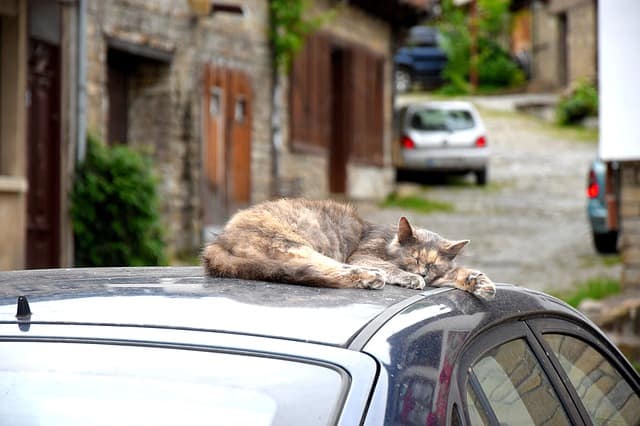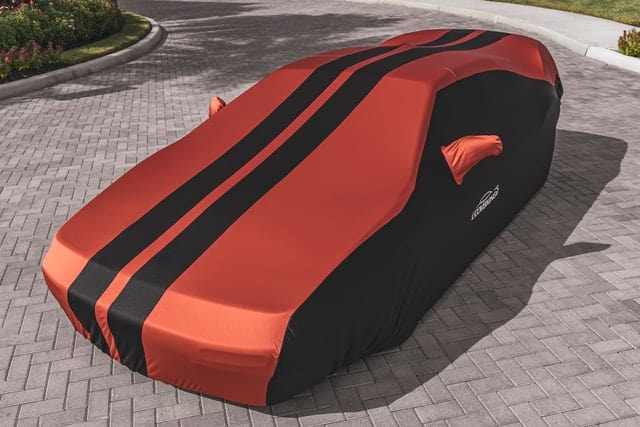Last Updated on March 1, 2025 by Nate Schnell
Cats have a habit of climbing onto cars, leaving scratches, paw prints, and sometimes even causing damage under the hood. While cats are lovable pets, no car owner wants to deal with claw marks or potential engine issues caused by a feline visitor. Fortunately, there are multiple ways to keep cats away from your vehicle, some simple and others requiring a little more effort.
Why Do Cats Get on Cars?
Cats are drawn to vehicles for several reasons. The warmth of a recently driven car is inviting, especially during colder months. Some cats like the elevated view from the hood or roof, while others seek shelter underneath or inside the engine bay. Whatever the reason, keeping them away is essential for protecting your vehicle.
Effective Ways to Keep Cats Off Your Car
Talk to the Owner
If the cat belongs to a neighbor, the first step is to talk to them. Ask if they can keep their pet indoors, particularly at night. If keeping the cat inside isn’t an option, requesting that they trim the cat’s claws can reduce the risk of scratching.
Use Cat Repellent Sprays
Commercial cat repellent sprays contain scents that cats find unpleasant, such as citrus or certain essential oils. Spraying around the car (not directly on the paint) can deter cats from approaching. If one spray doesn’t work, try a different formula, as cats react differently to various scents.
Mothballs as a Deterrent
Cats dislike the strong smell of mothballs. Placing them in a breathable container and positioning them around your car can discourage cats from coming near. However, mothballs have a strong odor, so using an air freshener inside your vehicle may be necessary.
Cover Your Car
A high-quality car cover provides a physical barrier against cat scratches and paw prints. While it won’t prevent cats from jumping onto the car, it will protect the paint. Make sure to choose a well-fitted cover that won’t trap moisture.
Install Motion-Activated Lights or Sprinklers
Motion-sensor lights can startle cats and make them hesitant to return. For a more effective deterrent, motion-activated sprinklers will spray water when they detect movement, which most cats will avoid.
Use an Ultrasonic Repellent Device
Ultrasonic devices emit a frequency that cats find unpleasant but is inaudible to humans. These motion-activated deterrents work well for keeping animals away from specific areas, including your car.
Natural Repellents: Cayenne Pepper, Coffee Grounds, and Citrus Peels
Sprinkling cayenne pepper, coffee grounds, or citrus peels around your car can deter cats. They dislike the strong scents and will likely avoid the area. However, these natural methods need to be reapplied frequently to remain effective.
Keep the Area Clean
Cats are more likely to return to an area they’ve marked. Regularly washing your driveway or parking area can help eliminate their scent, reducing the likelihood of them returning.
Change Your Parking Spot
If possible, moving your car to a different location may be enough to break the cat’s habit. If the cat frequents a specific parking area, relocating your vehicle may deter it from continuing the behavior.
Use a Static Mat
Static mats deliver a mild electric shock when stepped on, teaching cats to avoid the area. This method is effective but may not be ideal if you have pets of your own or share a parking space with others.
Install a Car Alarm or Remote Horn
If the cat repeatedly climbs onto your car, using a remote-activated horn or alarm system can startle it away. Over time, the cat will associate your car with an unpleasant noise and stay away.
Train the Cat
If the cat is yours, training it to avoid the car can be effective. Using a spray bottle with water whenever it climbs onto the car can help reinforce the behavior. For neighbor cats, this method is less practical.
Use an App That Mimics Dog Barking
Playing a dog barking sound can make a cat think twice about approaching. While this method requires you to be present, it can be useful as a short-term deterrent.
Keep Food Out of Your Car
If a cat is attracted to your vehicle, it could be because of food wrappers or other scents left inside. Keeping your car clean and odor-free can reduce its appeal to animals.
Final Thoughts
Keeping cats off your car requires patience and experimentation. Some methods may work better than others depending on the cat’s habits and sensitivity to deterrents. Combining multiple approaches, such as repellents, motion sensors, and covers, will likely yield the best results. By being proactive, you can protect your vehicle while ensuring the safety of the neighborhood’s feline friends.



